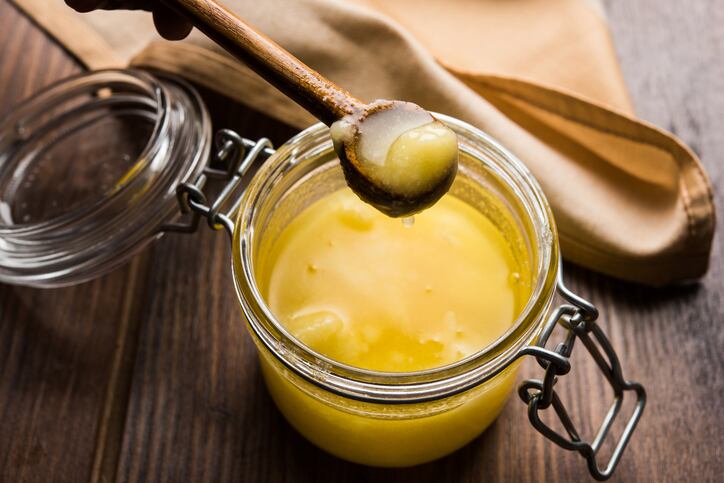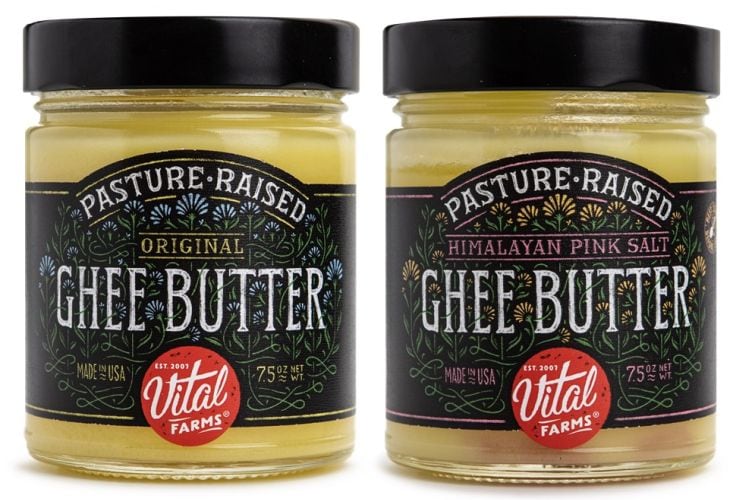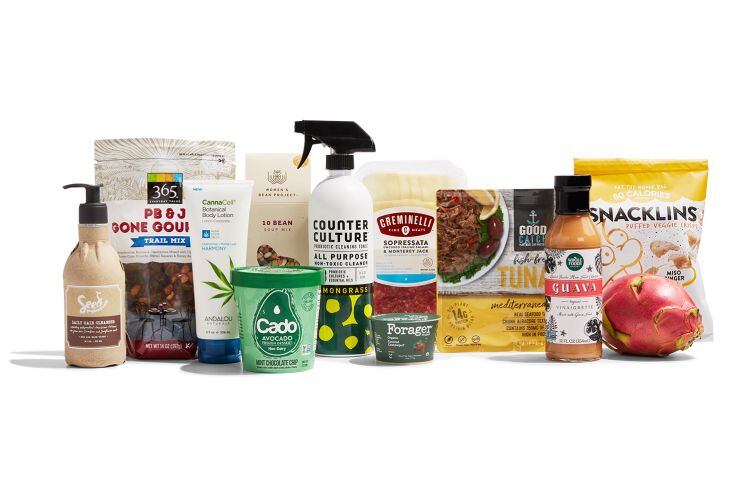Ghee, a class of clarified butter, originates from India and is widely used in Indian, Middle Eastern and Southeast Asian cuisine. Made by skimming and straining milk solids and water out of melted butter, ghee is free of lactose (milk sugar) and casein proteins and has a higher smoke point than butter. It also contains more short- and medium-chain fatty acids, including conjugated linoleic acid (CLA) and butyrates.
Vital Farms launched two ghee variants earlier this month – original and Himalayan pink salt – that are now available nationwide.
Shep Kowalski, brand manager at Vital Farms, said amidst a growing interest in ghee, the company saw an opportunity to bring a pasture-raised variant to consumers.
“Fats are back,” Kowalski told FoodNavigator-USA. “There is a growing trend for healthy fats and elevated cooking experiences in the home and ghee fits within both of those trends.”
Vital Farms' ghee products would primarily be stocked alongside its regular butter, he said, to help consumers discover the versatility of ghee, that can be used in frying and sautéing, for spreading on toast or even putting in coffee.
“We believe that ghee is a trend that has staying power. Ghee is versatile, delicious and simple – that's why it has been around for thousands of years,” Kowalski said.
'Fertile ground' for ghee innovation
Tom Vierhile, a Fairport New York-based new products expert, said consumer curiosity around ghee was certainly on the rise.
“According to Google Trends, the number of searches on 'ghee' in America rose by over 49% for the year period ended March 10, 2019 versus the year period ended March 12, 2017. Consumers are curious about how to use ghee and are adding it to coffee; trying to make it themselves in newish cooking devices like the Instant Pot; and are finding that it may complement the Keto Diet,” Vierhile said.
“...How to use ghee is kind of a blank slate. The good news there is that ghee can be used in place of traditional butter, so the range of potential usage applications is broad.” Although, he said its place in coffee – to make so-called 'bulletproof coffee' that is claimed to help focus, energy and satiety – was the application that had really “put ghee on the map”.
This rising tide is lifting a lot of animal fat boats
Vierhile said the specialty fat was also one of “the beneficiaries” of a shift in consumer thinking.
“It was not that long ago when most Americans would not even think about using an animal fat like lard, but lard is having a renaissance in America of late and this rising tide is lifting a lot of animal fat boats, including ghee.
“...Ghee is benefitting as the fear of fat has faded in some parts of the food industry. This, combined with growth in low-carbohydrate, high-fat diets like the Ketogenic Diet, have helped create fertile ground for ghee product innovation,” he said.
However, Vierhile said given the ghee trend had only recently garnered pace and consumer awareness remained mixed,“only time will tell how long and far the trend goes”.

Beyond a niche? 'Ghee has a mystique few other fats and oils have'
For the time being, he said ghee sat in a “specialty fat niche” that would take a fair bit of work to get out of.
Could it become the next coconut butter? “To some extent, I think that ghee does look like the next coconut butter, though it is tough to tell at this point how high the ceiling may be for ghee. The fat does have some unique properties, including a higher smoke point than most other fats, but the health story for ghee is less clear.”
While ghee enthusiasts often tout its health credentials, however, like coconut oil, ghee is high in saturated fat, something the Dietary Guidelines for Americans still advise consumers to watch carefully.
Ghee may be a mystery to the average consumer
Consumer education would therefore be “a crucial factor” in determining ghee's success, Vierhile said, and manufacturers should also consider playing up the background story.
“Because of its prominence in Asia – especially India – and its roots in Ayurvedic medicine, ghee has a mystique that few other fats and oils have. Unlike most other types of fats and oils, ghee has a compelling story from a cultural perspective.”
The indulgent aspect of the product with its rich, nutty and caramel-like flavor also set it apart, he said.
“While [ghee] is a market that is growing, companies should understand that we are still at a stage where ghee may be a mystery to the average consumer and that consumer education is likely to be important going forward. There may be short-cuts to the process. Getting ghee into the hands of key influencers on social media or in the restaurant industry may speed up the education process,” Vierhile said.
Kowalski said for Vital Farms, its pasture-raised message would be a key driver behind the push of its ghee, along with the product's subsequent high butterfat content that made it great for baking and ensured a rich flavor profile.


